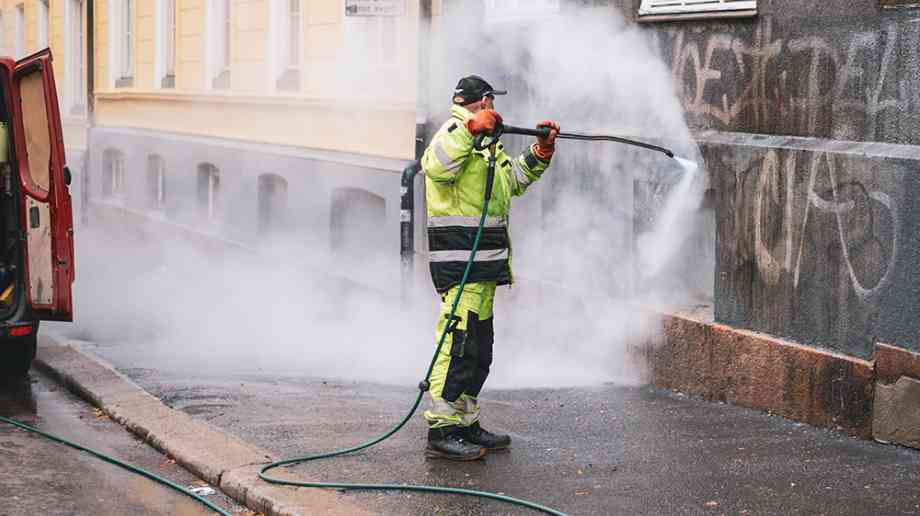Sue Robb of 4Children talks to Julie Laughton and Alison Britton from the Department for Education about the role of childminders in delivering the 30 hours free entitlement.

Banksy or burden?
Local councils are usually responsible for removing graffiti from public buildings, monuments, benches and bins. But what is the best way to go about this?
Graffiti is highly visible and has an impact on an area and on people’s perception of an area and can make them feel uncomfortable or unsafe. It is often associated with anti-social behaviour and crime. It can also be offensive.
Graffiti can be expensive to remove and can also have a detrimental effect on the environment.
Removing graffiti is not the only solution. Prevention is better than cure as they say. It is important that stakeholders including local authorities, local businesses and the transport network work together to develop and implement solutions to remove and prevent graffiti and share best practice.
Local authorities should encourage property owners in hotspots to take action to prevent graffiti on their property.
Prevention
There are a few measures that can be implemented to protect property from graffiti. This includes not painting outside walls white as this can be seen as a blank canvas. Muted colours like red, brown and grey are less attractive for those looking to leave their mark. Textured surfaces, for example, pebble dash, can also be a good deterrent.
Access prevention is one of the most effective methods. Planting shrubs and other plants against walls can prevent access to the area and coating drainpipes, fences and gates with anti-climb paint can prevent people from gaining access to high walls and roofs. Plants also create an uneven and unattractive surface for graffiti, as it also means that the graffiti will be less visible.
Fences and barriers are also a possibility, though this is not always practical and these can of course, then become a target themselves.
Anti-graffiti paint is also available which can be applied to surfaces and prevents the spray paint from bonding to the surface.
There are also sacrificial coatings, which can be applied over a surface, so that when graffiti does occur, it can be removed without damaging the original surface.
Security cameras are also a possibility, if the outcome is deemed worth the cost, maintenance and monitoring. You can also use motion-activated lights. If an area is well-lit, those thinking about graffiti are likely to be deterred. Motion-activated lights are cheaper to run than lights that are on all the time and provide less of a nuisance to those in the local area trying to sleep at night.
It has also been found that removing graffiti quickly will reduce the likelihood of that same spot being targeted again.
Education is also important. Working with local schools and youth groups and educating young people on the effect of graffiti and highlighting its antisocial and destructive nature and the damage and costs involved is a good prevention.
Graffiti is seen by some as an art form and sign of expression, so whatever you do, it is still going to happen. In that case, it is a good idea to actually provide a space that can be an outlet for people wanting to partake in graffiti.
Removal
It is important that anyone employed to work on the removal of graffiti is properly trained and skilled. Of course, they should also wear gloves and protective eyewear and masks where possible.
Inexperienced staff can cause damage to property and other surfaces and leave stains and marks or even permanent damage.
Care should be taken to prevent damage to property when removing graffiti. This includes not using high pressure washers or steam cleaners if it will damage the property such as historic buildings or monuments or electrical equipment like ticket machines.
Offensive graffiti
Graffiti that is offensive, that is racially or sexually offensive or homophobic for example should be prioritised and removed swiftly, within 24 hours. Offensive graffiti should be reported to the police, as it may be a hate crime – it could also lead police to evidence of other crimes, such as membership of a proscribed organisation or posting offensive material online. Offensive graffiti should also be documented as it can be used as evidence if someone is arrested or charged.
There are plenty of specialist companies that can do the job for you. The staff are trained and experienced and will have the most effective equipment.
While preventing graffiti is great, it will still happen. Therefore it is important that measures are in please should this be the case. It is important that staff are properly trained and they have the proper equipment in order to do the job properly.
Company Focus
Located in Bromley, Japanese Knotweed Eradication Ltd has been providing solutions in the treatment and removal of Japanese Knotweed (Fallopia Japonica) for over a decade. During this time we have mastered a repertoire of methods, from herbicidal treatments to landscaping solutions, tailored to address the unique challenges our clients face with this pervasive weed.
Event Diary
UKREiiF has quickly become a must-attend in the industry calendar for Government departments and local authorities.
The multi-award-winning UK Construction Week (UKCW), is the UK’s biggest trade event for the built environment that connects the whole supply chain to be the catalyst for growth and positive change in the industry.
Supplier Profiles
Geo Energy
At GeoEnergy Design, we're on a mission to disrupt the traditional way heating and cooling ha
Latest Features
Professor Harith Alani, director of the Knowledge Management Institute at the Open University explains how AI can be used for good and bad.
Alex Lawrence, head of health & social care, techUK sets out techUK’s Five Point Plan for CareTech.












